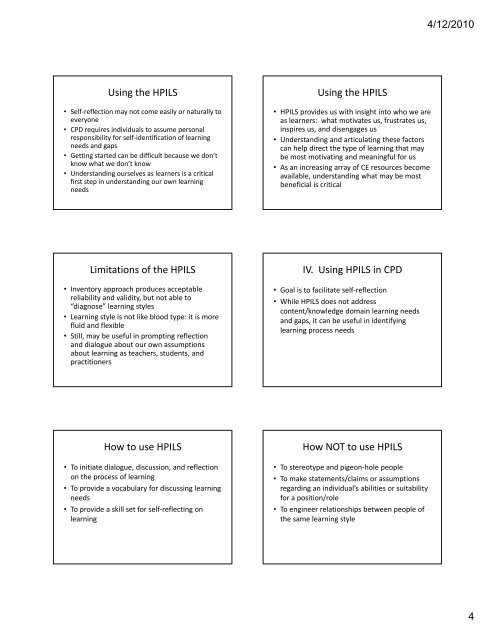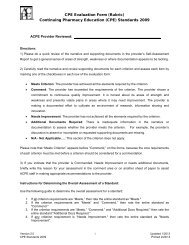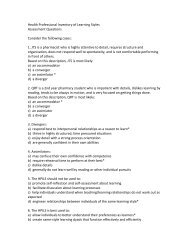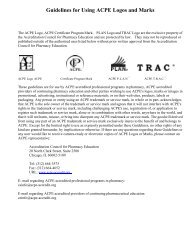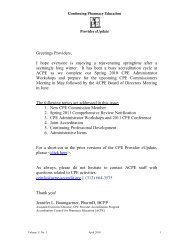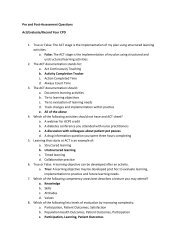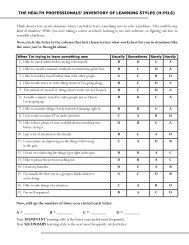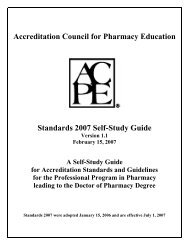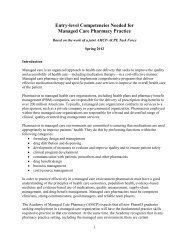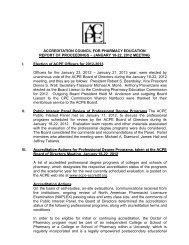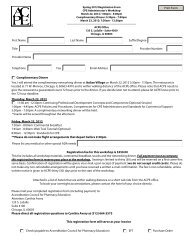Health Professionals' Inventory of Learning Styles (H-PILS) g y ...
Health Professionals' Inventory of Learning Styles (H-PILS) g y ...
Health Professionals' Inventory of Learning Styles (H-PILS) g y ...
- No tags were found...
You also want an ePaper? Increase the reach of your titles
YUMPU automatically turns print PDFs into web optimized ePapers that Google loves.
4/12/2010Using the H<strong>PILS</strong>• Self‐reflection may not come easily or naturally toeveryone• CPD requires individuals to assume personalresponsibility for self‐identification <strong>of</strong> learningneeds and gaps• Getting started can be difficult because we don’tknow what we don’t know• Understanding ourselves as learners is a criticalfirst step in understanding our own learningneedsUsing the H<strong>PILS</strong>• H<strong>PILS</strong> provides us with insight into who we areas learners: what motivates us, frustrates us,inspires us, and disengages us• Understanding and articulating these factorscan help direct the type <strong>of</strong> learning that maybe most motivating and meaningful for us• As an increasing array <strong>of</strong> CE resources becomeavailable, understanding what may be mostbeneficial is criticalLimitations <strong>of</strong> the H<strong>PILS</strong>• <strong>Inventory</strong> approach produces acceptablereliability and validity, but not able to“diagnose” learning styles• <strong>Learning</strong> style is not like blood type: it is morefluid and flexible• Still, may be useful in prompting reflectionand dialogue about our own assumptionsabout learning as teachers, students, andpractitionersIV. Using H<strong>PILS</strong> in CPD• Goal is to facilitate self‐reflection• While H<strong>PILS</strong> does not addresscontent/knowledge domain learning needsand gaps, it can be useful in identifyinglearning process needsHow to use H<strong>PILS</strong>• To initiate dialogue, discussion, and reflectionon the process <strong>of</strong> learning• To provide a vocabulary for discussing learningneeds• To provide a skill set for self‐reflecting onlearningHow NOT to use H<strong>PILS</strong>• To stereotype and pigeon‐hole people• To make statements/claims or assumptionsregarding an individual’s abilities or suitabilityfor a position/role• To engineer relationships between people <strong>of</strong>the same learning style4


